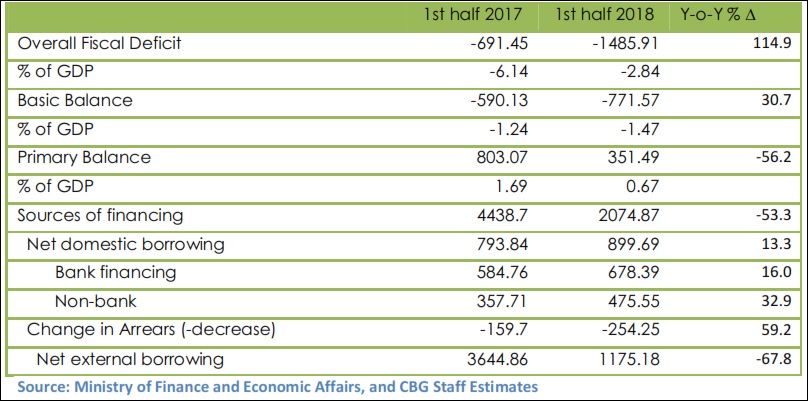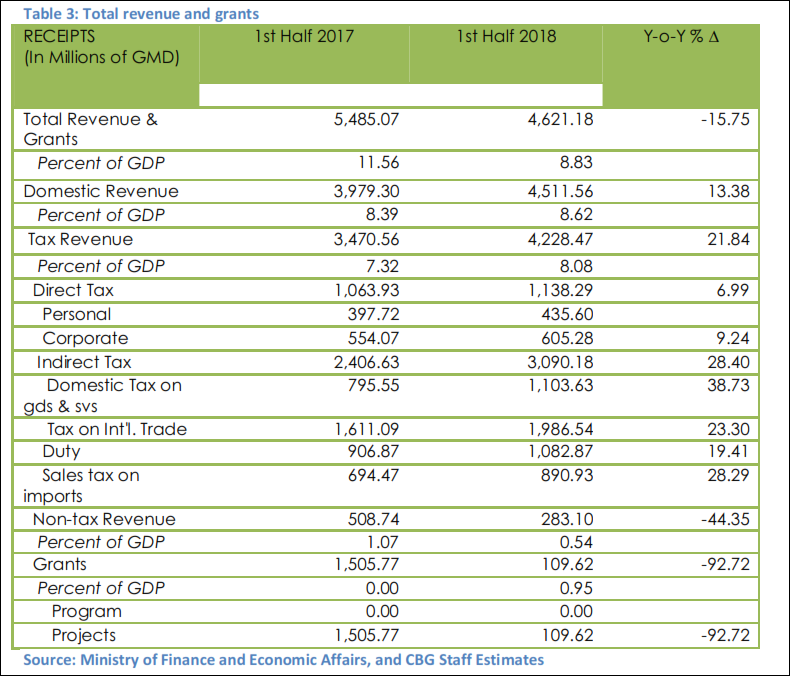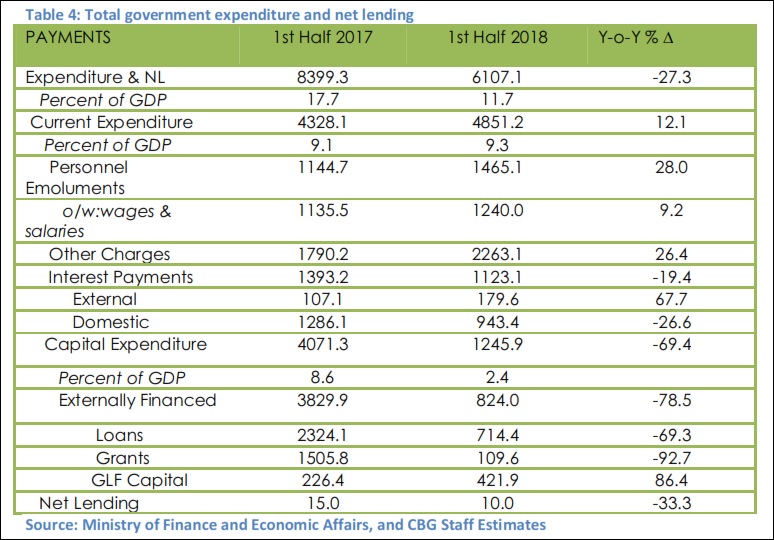The recent Central Bank of The Gambia MPC report summarizes developments in key macroeconomic sectors in the Gambia. The publication also gave more details about government revenue and expenditure for the first half year 2018 compared to the correspondent period in 2017. The decision of CBG to share details fn the fiscal activities is a welcome approach to accountability and good governance.
This article shares some extracts from the MPC report.
Real Sector Developments
According to data from the Gambia Bureau of Statistics, real GDP has grown by 4.6 percent in 2017 compared to 0.4 percent in 2016. This was driven largely by rebound in tourism and trade, financial services and insurance, coupled with the robust growth in construction, transport and telecommunication.
Agricultural production, which accounted for 21.4 percent of GDP, contracted by 8.1 percent due mainly to erratic rainfall. The services sector remains the largest sector of the economy and contributed 57.7 percent to the total value of real GDP. The sector registered a growth rate of 10.6 percent in 2017, driven mainly by the significant growth in wholesale and retail trade, financial and insurance activities as well as information and communication. The industrial sector accounted for 14 percent of GDP in 2017 and is the smallest among the sectors in terms of contribution. It registered a growth of 0.2 percent in 2017 following a contraction of 6.1 percent in 2016. The recovery in the sector from its slump in 2016 is mainly supported by the development in mining and quarrying, construction, water supply, sewage and waste management. Activity in the manufacturing sub-sector, on the other hand, is estimated to have contracted by 12 percent in 2017.
Fiscal Development
Government fiscal operations in the first half of 2018 resulted to an improved position compared to a year ago, despite the significant decline in grant receipts. The fiscal balance improved as a result of higher domestic revenue mobilization through taxes, and decline in interest payments and capital expenditure.
The overall fiscal deficit stood at D1.5 billion (2.8 percent of GDP) in the first half of 2018, lower than D2.9 billion (6.1 percent of GDP) in the corresponding period of 2017. This represents 49.0 percent contraction. The low-interest rate environment in the money market has resulted to significantly lower domestic interest payments. However, other components of recurrent expenditure have increased. The marked decline in capital expenditure is explained by the non-disbursement of grants in the second quarter of 2018.

Revenue and Grants
Total revenue and grants in the first half of 2018 totalled D4.6 billion (8.8 percent of GDP), lower than D5.5 billion (11.6 percent of GDP) registered in the corresponding period a year ago, representing a decline of 15.8 percent. This is as a result of lower-than-expected grant disbursement. Domestic revenue increased to D4.5 billion (8.6 percent of GDP) in the first half of 2018 from D4.0 billion (8.4 percent of GDP) in the first half of 2017.
Tax revenue increased to D4.2 billion (8.1 percent of GDP) in the first half of 2018, compared to D3.5 billion in the corresponding period of 2017, or by 21.8 percent. Revenue from indirect taxes rose to D3.1 billion or by 28.4 percent. Of the components of indirect taxes, domestic tax on goods and services and international trade tax rose by 38.7 percent and 23.3 percent to D1.1 billion and D2.0 billion respectively. Similarly, direct tax revenue grew to D1.1 billion or by 7.0 percent. Of the components of direct tax, personal and corporate taxes grew by 9.5 percent and 9.2 percent to D435.6 million and D605.3 million respectively. In contrast, non– tax revenue declined to D0.3 billion, or by 44.4 percent during the period under review.

Expenditure and Net Lending
Expenditure and net lending declined to D6.1 billion (11.7 percent of GDP) in the first half of 2018 from D8.4 billion (17.7 percent of GDP) in the first half of 2017, consequent of the significant fall in interest payments and capital expenditure. Recurrent expenditure increased to D4.9 billion (9.3 percent of GDP) from D4.3 billion (9.1 percent of GDP) in the first half of 2017, driven by growth in other charges (goods and services, and subsidies and transfers) by 26.4 percent.
Interest payments, on the other hand, decreased by 19.4 percent due to the decline in domestic interest payments by 26.7 percent. In contrast, external interest payments increased from D107.1 million in the first half of 2017 to D179.6 million in the first half of 2018. Interest payments account for 18.4 percent of total expenditure and 24.9 percent of domestic revenue. Wages and Salaries rose by 9.2 percent to D1.2 billion in the first half of 2018 and accounted for 20.3 percent of total expenditure and 27.5 percent of domestic revenue.
Capital expenditure declined substantially to D1.3 billion (2.4 percent of GDP) or by 69.4 percent in the first half of 2018, from D4.1 billion (8.6 percent of GDP) in the first half of 2017. The drop in capital spending is due to the non-disbursement of grants in the second quarter of 2018.

Summary
In overall, the Gambia government has registered an improved fiscal performance in the first half of 2018. However, there is still a long way to go. The report indicated a strong correlation between capital (long-term investments) project and grant. Grant is not sustainable and most comes with grantors conditions. Therefore, the country should seek to diversify sources of revenue to finance her long-term development agenda.
This article is an extract from the CBG report. You can download the full report here.


